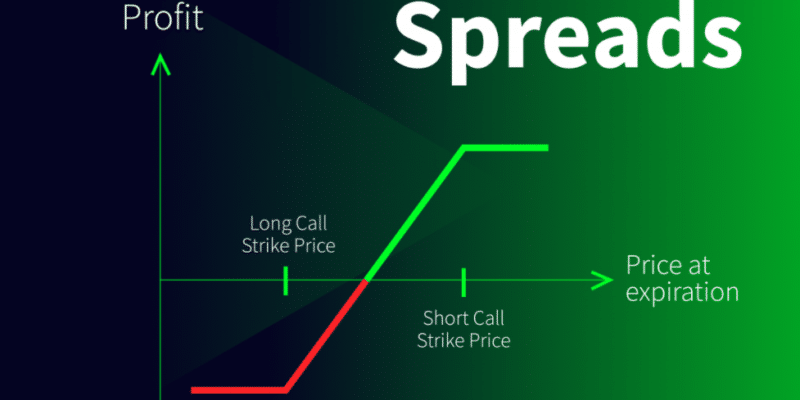The stock market is a cutthroat business. To make it, you have to figure out the best way to work with what you have. There are two types of traders; those who use the stock replacement strategy to grow their portfolio and those who prefer holding onto their stock.
If you are among the latter, then the cash will inevitably become a problem. So, to make some money on the downside, you’ll need to figure out a way to take advantage of your situation.
That’s where vertical spreads come in.
What is Vertical Spread?
According to tastytrade, “a vertical spread (or V-spread) entails buying and selling of options under the same category with the same expiration but at different strikes.”
Vertical Spread in Options Trading
You can sell shares to collect time premiums. A share is said to be out of the money when its price is below the maximum limit you set as the speculator. If a share is out of the money by the maturity date, it becomes worthless.
Say a company is trading at $750 per share, and you intend to bet that the stock will by no means go over $90 per share. You can sell a $90 stock option for $5. If the stock is still out of the money by the maturity date, you get to keep the credit receipt worth $450 as a profit.
On the downside, the risk here is undefined as the stock price may very well skyrocket beyond your speculation. You might also get a substantial capital requirement to sell the stock.
Benefits of Trading Vertical Spread
Limited Risk
One of the most enticing things is that you only stand to lose what you have spent. This comes in handy in mitigating risks since the last thing you need when making any trade is an unmitigated risk in addition to the risk you’re already taking.
The stock replacement strategy also has a limited-risk scenario, but the difference in risk is still considerably higher. In some cases, the risk might be up to ten times higher than in V-spread.
The Cost Advantage
Buying V-spread is exceptionally cost-effective. Let’s say you believe that the stock of a company X is likely to trade down. You could short the stock, but that would be rather expensive and possibly counterproductive since you would have to account for the margin requirement.
If you have a well-allocated portfolio, the chances are that there won’t be much cash available in your account to cover the margin requirement.
On the other hand, when making a trade, your total cost will be much less than the margin requirement required to short the stock with V-spread.
It can be used to Play Direction.
When it comes to stock trading, nothing racks in more profits than directional trading. Directional trading is, however, very risky. V-spread mitigates these risks by offering you binary options for making money.
This means that whichever direction the market goes, you still stand a chance to make some profit or mitigate your losses.
It can be used to Collect Premiums.
Apart from being a brilliant directional strategy, you can also use it to collect premiums. If the stock you sell has a higher risk than the one you buy, your spread will generate profit in terms of premiums in the long run.
This means that your spread will not only benefit from the stock moving in your direction but also from the passage of time. Even if the stock doesn’t move in any direction, you could still make a small profit out of it!
Key Takeaway
Vertical spread is a brilliant directional and premium-collection strategy. However, to take full advantage of this trading strategy, you must have in-depth knowledge of how it works.
